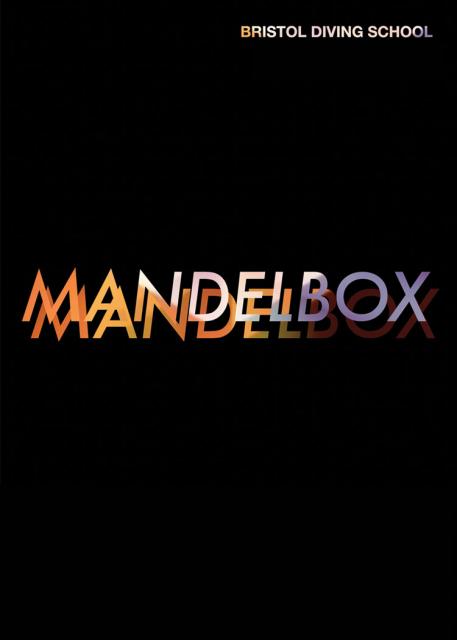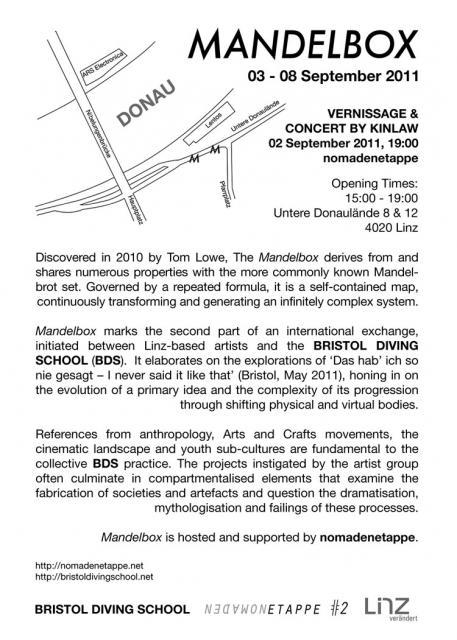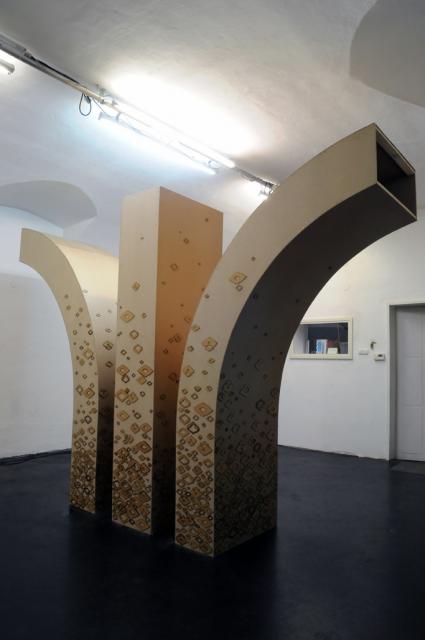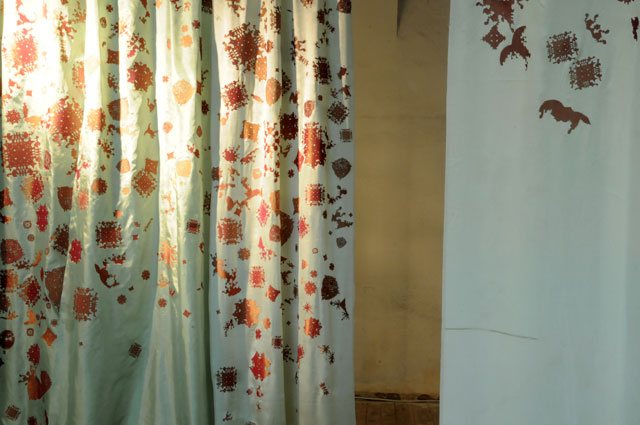MANDELBOX
Discovered in 2010 by Tom Lowe, the Mandelbox is a self-contained map, governed by a repeated formula that is continuously transforming and generating an infinitely complex system.
Mandelbox marks the second part of an International exchange, initiated between Linz-based artists and BRISTOL DIVING SCHOOL. The project elaborates on the ideas explored within 'Das hab' ich so nie gesagt - I never said it like that ' (Bristol, May 2011), concentrating on the evolution of an initial idea and the complexity of its progression through shifting physical and virtual bodies.
The reference points of the exhibition are akin to the Mandelbox itself, they converge and diverge simultaneously. The ideas and objects act as a poetic hybrid of domestic leisure consumer products that are antagonistically juxtaposed with profound scientific and metaphysical theories.
Two makeshift podiums inspired by failed concept ideas of Atari products occupy one of the rooms. The concept drawings are now realised as banal exhibit objects; they present abstract archival materials that have informed the processes behind the making of the exhibition. The failed prototypes represent a pattern in consumer production culture. Intentionally this exhibition singles out the ‘Atari’ brand as a reoccurring motif and highlights the fluctuation between consumer choice and product and its relationship with cult and ritual.
‘Atari’ is the brand name of a corporation owned by several entities since its inception in 1972, the most famous of its products being the game ‘Pong’.
In 1991, Loren Carpenter invited a crowd of Silicon Valley residents to a large shed, and performed a fascinating experiment. He wanted to see if a crowd of people could spontaneously self-organise into a network capable of playing the video game Pong without any management or hierarchy. (Adam Curtis, 2011)
The nihilistic escapism that exists in both the understanding of scientific theories or the use of Atari home entertainment systems forms an interspersing exposé of the user and the used. The blurring of these boundaries results in a self-edifying act, perhaps part- sublime, part- abolition of perspective, although this point is presented facetiously through designed decorative ephemera.
The dualistic premise of the exhibition is emphasised by the video projection. It is the artifact of an interchanging procedure in which digital data is fed into the analogue VHS medium and then rendered again by digital means. This process of exchange aims to accentuate the cyclical nature of the evolution of technology and the constant deluge of the defunct by-product. The temporality of the VHS video film and its finitude within the processes of decay are in a constant state of instability. Both the sound work and the video projection are displayed in the same room simultaneously but work separately of one another creating an ever-changing configuration of image and sound.
Every man builds his world in his own image. He has the power to choose, but no power to escape the necessity of choice. (Ayn Rand, 1957)
Rather than attempting to testify or allude to an esoteric formula, Mandelbox emerges as a response to the way in which new scientific and mathematical discoveries are represented. There is a specific visual language used to highlight ideologies and emphasise the integrity of their existence. The accessibility of this information has become increasingly dispersed, and its context and meaning broader.
The Mandelbox project marks the beginning of an extensive conceptual inquiry that informs the progression of BRISTOL DIVING SCHOOL as a collaborative authorship.



